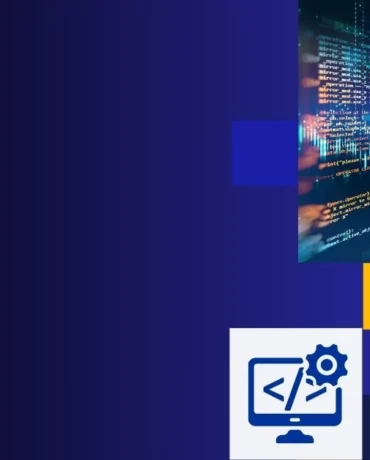The world of software development is changing at a breakneck speed, with emerging technologies shaping the way developers build, deploy, and maintain applications. As we step into 2025, staying ahead of these trends is crucial for businesses and developers alike. This article explores the top software development trends set to dominate the industry in 2025.
Artificial Intelligence (AI) and Machine Learning (ML)
Artificial Intelligence (AI) and Machine Learning (ML) stand out prominently as transformative forces shaping software development trends in 2025 and beyond. First, AI continues to dominate the technology landscape, significantly reshaping industries with its capacity to create advanced, human-like content through generative AI. Additionally, widespread adoption of AI tools, such as GitHub Copilot, shows a clear shift toward automated software development, promising notable productivity gains.
Moreover, AI applications are becoming increasingly sophisticated. Specifically, agentic AI, which autonomously handles complex tasks, tends to reach peak interest levels by 2025. Companies are preparing to launch pilot projects using specialized AI agents to streamline various stages of software creation, testing, and maintenance. Consequently, user interfaces are shifting from traditional forms and fields toward conversational and interactive AI-driven experiences.
Lastly, with AI’s expanding reach, there is heightened emphasis on ethical considerations and security. Ethical AI aims to ensure that advancements benefit humanity responsibly, and cybersecurity incorporates with AI developments. This synergy introduces emerging concepts such as AI Trust, Risk, and Security Management (AI TRiSM).
Key points include:
- AI tools like GitHub Copilot adopted by over 80% of software teams by 2025.
- Generative AI is reshaping industries and moving to mainstream deployment.
- Agentic AI enabling more intelligent DevOps automation, with 25% of companies initiating pilot projects by 2025.
- Shifting software user interfaces toward conversational AI experiences.
- Rising emphasis on ethical AI, cybersecurity integration, and AI TRiSM frameworks.
Rise of ‘Vibe Coding’
‘Vibe coding’ is an emerging trend where developers write software using natural language instructions. This approach lowers the barrier to entry for non-programmers, enabling more people to develop software without deep coding knowledge. Vibe coding relies on large language models (LLMs) to generate working code from natural language descriptions. Introduced by Andrej Karpathy in February 2025, this technique allows amateur programmers to produce software without extensive training.
With AI-assisted development and natural language programming, individuals from non-technical backgrounds can now create applications simply by describing their needs in everyday language, making software development more accessible than ever before. However, it has limitations, as AI tools are not always able to fix or understand bugs, requiring manual experimentation to resolve issues.
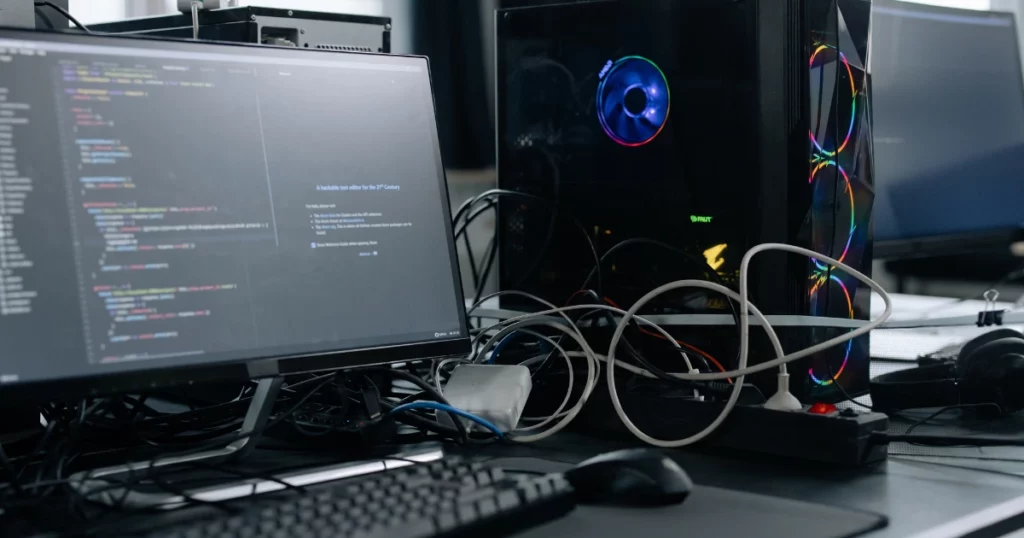
Quantum Computing Breakthroughs
Quantum computing is advancing rapidly, with major tech companies investing in research and development. Unlike traditional computers, quantum systems can process complex calculations at unprecedented speeds, solving problems that were previously unsolvable. Quantum computing has the potential to revolutionize fields such as logistics, medicine, climate modeling, and financial forecasting. Businesses that adopt this technology early will gain a competitive edge in solving highly complex challenges.
Key Breakthroughs in 2025
- Microsoft’s Eight-Qubit Processor Design: A topological qubit design with only 1% error rates, paving the way for scalable quantum chips.
- IBM’s Quantum-Based Computing System: Combines quantum and classical computing for industries like finance, manufacturing, and telecommunications.
- Google’s Neutral-Atom Quantum System: Achieves 99.5% fidelity with rubidium atoms, offering better scalability and energy efficiency.
Neuromorphic computing
Inspired by the human brain, this technology utilizes spiking neural networks to process information efficiently and adaptively. Unlike traditional computing architectures, neuromorphic systems process data in parallel and event-driven manners, leading to significant energy savings and faster decision-making. The neuromorphic computing market is experiencing substantial growth. Valued at approximately $8.36 billion in 2025, it is projected to reach around $47.31 billion by 2034, representing a compound annual growth rate (CAGR) of 21.23% from 2025 to 2034. This surge is driven by the increasing demand for energy-efficient AI processing and real-time sensor applications.
Neuromorphic systems are particularly advantageous in edge computing scenarios. They enable devices to process data locally, reducing latency and dependence on cloud services. This capability is crucial for applications requiring real-time decision-making, such as autonomous vehicles and industrial automation.
Low-Code and No-Code Platforms
Low-Code/No-Code (LCNC) development emerges as a powerful trend reshaping software creation processes in 2025. Initially, these platforms empower individuals without deep technical backgrounds to design and deploy applications swiftly. Consequently, this approach significantly addresses the ongoing shortage of skilled software engineers.
Furthermore, the LCNC market is rapidly expanding, highlighting its increasing influence. For instance, Gartner projects the market will reach $65 billion by 2025. This rapid growth highlights a strong demand for simplified app development tools accessible to broader audiences.
Additionally, LCNC platforms foster innovation by democratizing software creation. Non-developers gain the capability to quickly prototype ideas, streamlining processes and enhancing collaboration across various teams. Ultimately, this boosts organizational productivity and flexibility.
Key highlights include:
- LCNC market expected to reach $65 billion by 2025.
- Low-code platforms significantly ease the software engineering shortage.
- LCNC fosters rapid innovation and collaboration.
- Enables non-technical users to quickly create functional applications.
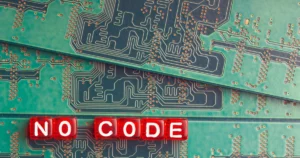
Internet of Things (IoT) Expansion
With the number of IoT devices increasing, developers are required to build software that can seamlessly interact with multiple connected devices, ensuring efficiency, security, and interoperability. IoT development now demands expertise in cybersecurity, cloud computing, and real-time data processing to ensure smooth and secure device communication.
AI and IoT are working together, creating what’s known as AIoT. In 2025, more connected devices will process data instantly without sending it to the cloud, thanks to edge computing. This allows faster decision-making, enhancing IoT’s efficiency and responsiveness in critical industries.
Read more: Top 6 programming languages for IoT development
Emphasis on Cybersecurity
Cybersecurity-as-a-Service (CaaS) is emerging as an essential trend shaping software development in 2025. Initially, this model offers businesses flexible, on-demand security solutions delivered via cloud services. Companies can swiftly detect threats, assess vulnerabilities, and ensure compliance, all without heavy upfront investment. Furthermore, cybersecurity threats are evolving quickly, driven by technologies like IoT, generative AI, and expanding cloud infrastructures. Consequently, global cybercrime costs could reach a staggering $10.5 trillion by 2025. Therefore, investing in robust and agile security services becomes critical for organizations.
Additionally, CaaS significantly simplifies cybersecurity management. Businesses can conveniently scale their security measures, adapting swiftly to new threats. This flexible approach enhances responsiveness, reduces costs, and empowers companies to focus more resources on their core operations.
Top Cybersecurity Trends in 2025
- Generative AI Driving Data Security Programs: Focus shifts to protect unstructured data like text, images, and videos.
- AI in DevSecOps: Automates repetitive tasks and predicts potential threats, enhancing risk management.
Evolution of DevSecOps
Initially, DevSecOps integrates security directly into development processes, emphasizing proactive rather than reactive measures. This method ensures software is secure from inception, preventing vulnerabilities before deployment.
Moreover, the concept is evolving beyond traditional “shift-left” approaches. Now, companies adopt a more comprehensive “shift everywhere” mindset. This strategy spreads security practices evenly throughout all software lifecycle stages, significantly enhancing reliability and trust.
Additionally, DevSecOps accelerates software delivery through automation. Teams consistently utilize continuous delivery methods, automating build, test, and deployment stages. As a result, software reaches users swiftly, securely, and reliably, enhancing customer satisfaction and market responsiveness.
Key highlights include:
- DevSecOps shifting toward a comprehensive “shift everywhere” approach by 2025.
- Global DevOps market predicted to reach $12.85 billion by 2025.
- Continuous delivery and automation remain essential for faster and secure software deployment.
- DevSecOps strengthens software resilience and customer trust.
Cross-functional Engineering Teams
Organizations shift away from isolated DevOps groups towards cohesive teams combining diverse engineering skills. This collaborative approach fosters holistic problem-solving and accelerates innovation cycles.Unified platforms become increasingly important to support these integrated teams. Specifically, platforms provide end-to-end capabilities from continuous integration and delivery (CI/CD) to chaos engineering and cloud cost management. Thus, engineers easily access tools that streamline workflow and improve productivity
Cross-functional collaboration also reduces organizational silos. Teams achieve better alignment across disciplines, enhancing communication and agility. Consequently, software projects progress more efficiently and adapt rapidly to market changes.
Remote and distributed development teams
Remote and distributed development teams have become a cornerstone of software development in 2025. Companies now prioritize flexibility and global talent acquisition, recognizing that remote work enhances productivity and employee satisfaction. According to Gartner, 87% of tech companies plan to maintain or expand their remote development teams in 2025. This shift allows organizations to tap into a diverse talent pool, fostering innovation and reducing operational costs.
Moreover, remote work arrangements contribute to increased productivity. A report from Australia’s Productivity Commission indicates that hybrid work models, combining remote and in-office work, reduce commuting time, lower sick days, and minimize distractions, all of which benefit productivity. The report also notes that as of August 2024, 36% of employed Australians usually worked from home, up from just 12% before the pandemic.
To support these distributed teams, companies invest in advanced collaboration tools and cloud-based platforms. Tools like Slack, Zoom, and Jira facilitate seamless communication and project management across different time zones.
Agile delivery practices
Companies are prioritising flexibility, collaboration and rapid iteration to meet the changing market. This is a move away from rigid frameworks to more adaptive methodologies that put customer value and team empowerment at the forefront. One of the trends is the return to core Agile principles. Teams are focusing on simplicity, delivering customer value and integrating Agile into daily work without too many ceremonies. This is making processes easier and more efficient .
Also, Artificial Intelligence (AI) is being integrated into Agile. AI tools are helping with sprint planning, backlog prioritisation and resource allocation so teams can identify bottlenecks and optimise workflows.
AI-Driven Development Tools
AI-powered development tools assist coders by providing real-time code suggestions, reducing errors, and improving overall efficiency. These tools also help developers upskill by offering personalized recommendations, tutorials, and best practices, making continuous learning more accessible.
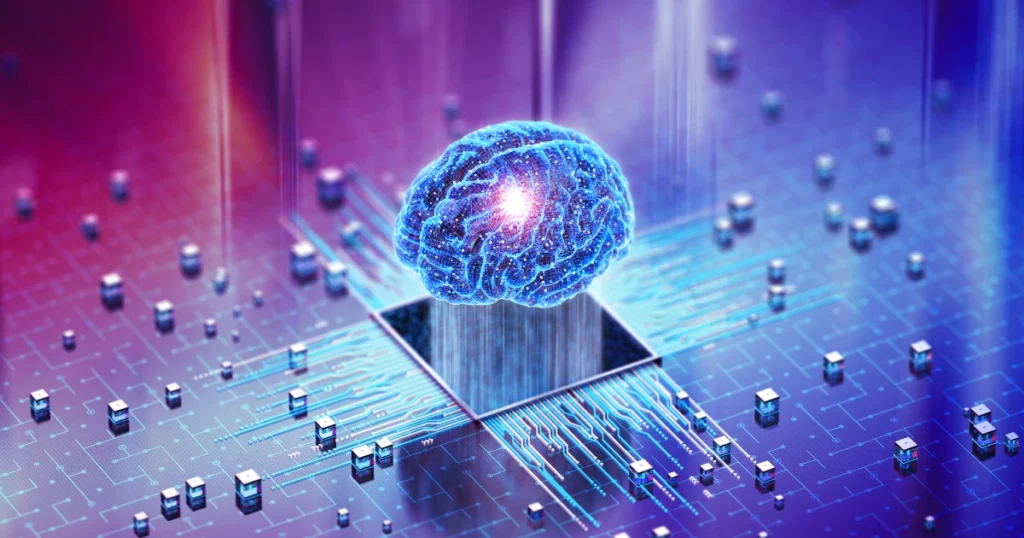
Ethical AI Practices
With AI being used in critical applications, ethical AI practices are becoming a top priority. Developers must ensure AI models are transparent, unbiased, and fair. By prioritizing ethical AI, businesses can build trust with users and regulators, leading to wider adoption and positive public perception. Some of the importance of ethical AI practices are:
- Transparency and Accountability: Ensures AI decisions are explainable and accountable.
- Bias Mitigation: Prevents AI models from perpetuating existing biases.
Progressive Web Apps (PWAs)
PWAs combine the best of web and mobile apps, offering fast load times, offline capabilities, and a seamless user experience across devices. Since PWAs work on both mobile and desktop, businesses can reduce development costs while maintaining a high-quality user experience.
Cross-Platform Development
Contrary to expectations of native app development growth, cross-platform frameworks are actually gaining significant momentum. Flutter, React Native, and Kotlin Multiplatform are providing near-native performance while reducing development costs and time-to-market. Businesses increasingly demand faster deployment and platform flexibility, which drives this shift away from native-only development. Moreover, companies reserve native development primarily for applications requiring ultra-specific hardware capabilities or high-performance features.
Programming Language Dominance
The programming language landscape shows continued dominance of established languages alongside emerging alternatives. Python, JavaScript, and Java maintain their leading positions due to their versatility and extensive ecosystems. Meanwhile, modern languages like Rust, Go, and TypeScript gain traction in specialized areas, particularly for system programming and web development. Additionally, developers increasingly adopt these languages for their performance benefits and enhanced safety features. Rust, for example, was named the “most loved” language in GitHub’s 2020 Report.
Internal Developer Platforms and Portals
Internal Developer Portals emerge as centralized hubs that aggregate tools, services, and documentation into unified interfaces. These portals prioritize developer experience through self-service actions, personalized views, and advanced search capabilities. Subsequently, workflow automation features enable developers to customize dashboards and streamline approval processes.
Immersive Technology Expansion
Extended Reality technologies, including VR, AR, and MR, advance rapidly with next-generation hardware releases. Meta’s Quest 3 demonstrates this trend with its upgraded Snapdragon XR2 Gen 2 processor and passthrough AR features. Therefore, organizations increasingly integrate XR into training, education, and collaborative workflows due to improved affordability and performance.
Cloud-Native Development
Cloud-native development ensures that applications are built for scalability and flexibility, making them more resilient and easier to manage. Using microservices allows developers to create modular applications that can be easily updated, scaled, and maintained independently. The trend in 2025 of cloud-native development is still:
- Serverless Architectures: Eliminate server management, allowing developers to focus solely on writing code.
- Kubernetes: Continues to be a game-changer for containerized applications, with emerging trends like multi-cluster management.

Digital Twin Technology Growth
Digital twin software transforms industries through AI, IoT, and cloud computing integration. The market projects reaching $110 billion by 2028, growing at 61.3% annually6. Companies implementing digital twins report 15% average improvements in operational efficiency and reduced carbon emissions. Additionally, 57% of organizations credit digital twins with strengthening their sustainability efforts.
Voice Technology Advancement
Voice-activated devices evolve with enhanced natural language processing capabilities that enable more intuitive human-machine interactions. AI-driven personalization allows voice assistants to learn from user behaviors and tailor responses accordingly. Real-time translation capabilities also break down language barriers, facilitating seamless multilingual communication.
Blockchain and Synthetic Media
Blockchain adoption accelerates across finance, healthcare, and supply chain management sectors. Industry analysts expect the global blockchain technology market to reach $1,000 billion by 2032. Simultaneously, synthetic media tools leverage AI to create and enhance content at scale, with the market projected to reach $10.41 billion by 2030.
Robotics and AI Integration
Robotics in 2025 combines artificial intelligence and machine learning to enable advanced data interpretation and real-time decision-making. Collaborative robots (cobots) redefine workforce dynamics through enhanced autonomy and simplified programming. These developments allow small and medium-sized enterprises to access robotic technologies more easily.
Biotechnology Software
AI transforms biotech software development by improving research precision and accelerating workflows. The AI in biotech application market reached $3.2 billion in 2024 and forecasts growth to $7.8 billion by 2029. AI-powered drug discovery reduces development time by up to 40% and cuts costs by 30%.
Automotive Software Development
Software-defined vehicles represent a paradigm shift where software defines vehicle features and performance characteristics. Centralized compute architectures consolidate computational workloads previously distributed across multiple electronic control units. Feature-on-demand capabilities enable owners to purchase and activate new functionalities after initial vehicle acquisition.
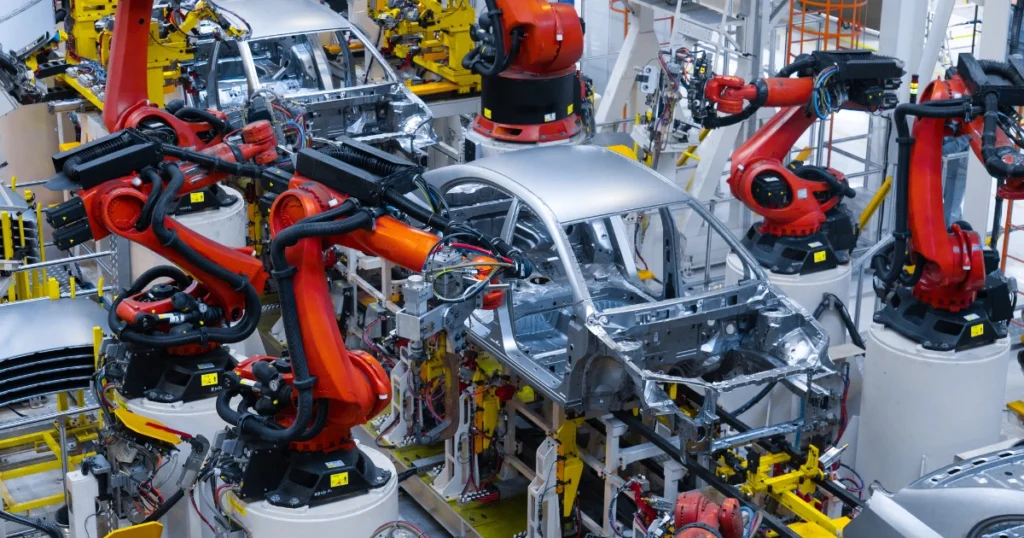
Enterprise Resource Planning Adaptation
Tax and regulatory changes compel multinational tech companies to upgrade their ERP solutions for enhanced compliance capabilities. Modern ERP systems provide automated tax calculations, integrated compliance tools, and centralized financial reporting. These features streamline tax preparation processes and reduce manual errors across multiple jurisdictions.
Focus on User Experience (UX) Design
User experience is now a major focus in software development, with companies investing in research to create more intuitive and engaging applications. A well-designed UX increases user retention, engagement, and overall satisfaction, making it a crucial factor for business success in 2025.
Total Experience (TX) is a pivotal concept for improved conversion, amalgamating customer experience, user experience, employee experience, and multi-experience into a central intersection. This approach aims to provide optimal customer experience while empowering support teams.
Software development in 2025 will be defined by AI, automation, security, and user experience. By embracing these trends, businesses and developers can stay ahead in an increasingly competitive landscape.
You got projects to finish? Hire a remote dedicated software development team and elevate your projects today — Contact us
Let’s get started with Sunbytes
Let us know your requirements for the team and we will get back to you right away.


